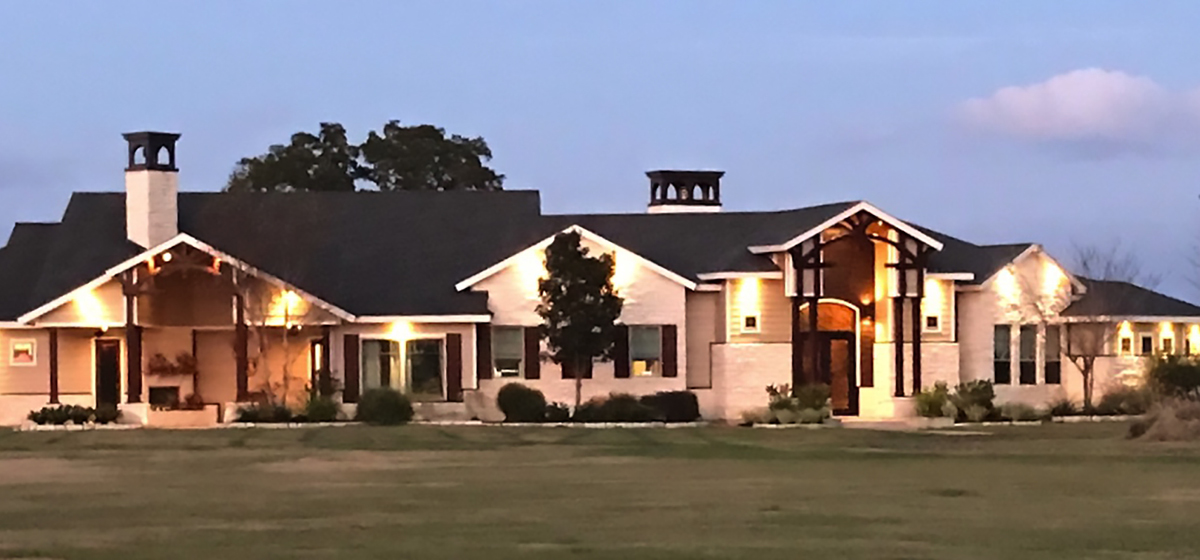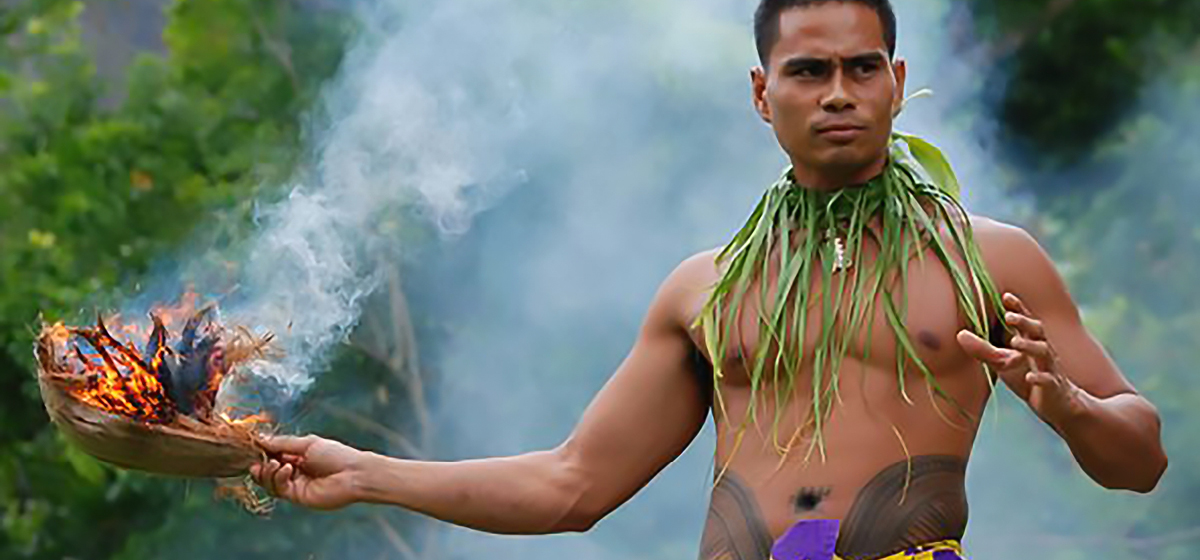Photos by Kelly Sue Photography

Elmer “Pop” Tuttle’s skills of caning and trunk restoration are referred to by many as an old skill—a lost art.
There is no shortage of seating or storage at Elmer “Pop” Tuttle’s home near Lake Conroe. A variety of cane-bottomed chairs and antique trunks are scattered throughout the house. Over the years, Pop has caned and “brought back to life” countless chairs, and he estimates he has restored more than 300 trunks.
A descendant of a long line of New England seafarers who first arrived in Boston in 1635, Pop retired in 1982 from Sikorsky Aircraft Corporation’s credit union. He brought his talents to Montgomery County in 1998. Set to celebrate his 100th birthday on March 30th, he still operates his retirement business.
 What was your childhood like?
What was your childhood like?I was born in 1917. We lived on Cape May, at the very southern tip of New Jersey. My mother got caught in the influenza epidemic when I was 20 months old. I don’t remember my mother. She passed away when she was 29. I went to live with my grandparents on Long Island. My grandfather was probably my greatest buddy. He taught me everything from fishing to swimming. I’ve got salt water in my veins.
I got to go to college quite accidentally. I finished high school in 1935. I had a friend whose father operated a delicatessen store in the little town we lived in on Long Island. He offered me a job. I was fat, dumb and happy. I had a job!
Just before my senior prom, I had realized there were females walking around on this earth, and I got interested in a young lady. One Saturday night we were out, and she said, “I am not interested in marrying any guy unless he graduates from college.” I had never thought about college. That was during the depression years. Come the next year, I was in New York University. And she became my wife. We were married in 1941. Her name was Jean; she was a great gal. We were married 66 years.
 How did you learn the art of caning?
How did you learn the art of caning?In high school, they offered a class called “manual training.” I couldn’t wait to get in that class, because that’s where the boys learned how to use tools and operate machinery. The girls went into home economics to learn how to cook and sew and make a guy happy. After one semester, you take on a project. I remember an ottoman almost the size of a piano bench. It was made out of oak, but the ends were open and had to have caning. The manual training teacher taught me how to do caning.
After I got out of high school, I saved a little money, got myself a lathe and a saw, and began to build things. I made a hope chest out of cedar for the gal who became my wife. After I got married, I had a little shop everywhere we lived. I could go home at night, cane a chair, and forget I was ever employed. It was good therapy. It’s not a complicated procedure. If it was, I couldn’t do it. But it takes time, and it’s all done by hand.
 When did you get interested in antique trunks?
When did you get interested in antique trunks?About three years before I retired in 1982, my wife and I went to a saw mill to pick up some lumber for a project. I could see an old house, and I thought I saw some antique trunks on the porch. Being curious, I walked up. I was astonished at the prices. I began to think, “I’ve got two old trunks filled with old toys and books in the basement. I bet I could do as good as what I saw on the front porch of the house.” I did do the two trunks during that summer and, then as I remember, I probably did another one. I think you can appreciate it’s a labor of love for me. I got into trunks, and the light came on. I realized these old trunks are 100 years old. That fascinated me, so I continued doing it.
The next summer we moved to Florida, across the bay from Tampa. I began doing what I had been doing, picking up old chairs, caning them, bringing them back to life. I found a lot of trunks in Florida. So many people migrated from the north with their furniture, including a trunk. In so many families, death would occur, and somebody had to get rid of what they owned. I could buy them for five to ten bucks at a garage sale every Saturday.
 I was busy all the time. I can think of a time when the shop was totally filled with trunks and chairs—more than I could possibly handle. I have had so many people say, “I am so glad I found you; I have been looking for somebody who does this.”
I was busy all the time. I can think of a time when the shop was totally filled with trunks and chairs—more than I could possibly handle. I have had so many people say, “I am so glad I found you; I have been looking for somebody who does this.”
When trunks came into being in the late 1800s, most people, if they traveled at all, had what was called a satchel or a valise. When the railroad came into existence, people could travel quite a distance and carry everything that they owned with them. They were stacked in the baggage cars, one on top of another. The round-top trunks went on top. I wish those trunks could talk, so they could tell me where they’ve gone.
 Have there been any especially memorable projects?
Have there been any especially memorable projects?Often times, the lid on a trunk is loose because the hinges are loose, and I have to separate them and work on them separately. One woman told me not to fasten it back on. She grabbed it and took it home. When she brought it back, she had lined the entire inside of the trunk with lace. On top of that she had placed her kids’ pictures, her parents’ picture, and her grandparents’ picture. She had a very specific reason for wanting her trunk to be restored.
Another project was several years ago. I got a phone call from a woman who said she was involved with the Montgomery Historical Society. She said, “I understand you restore old trunks. Some of the volunteers have discovered four trunks in the attic of the Davis house. Would you be interested in looking at them and telling us if they are worthy of being restored?” Getting up into that attic of that old house was a chore. Three people showed up. They said, “When you get to the restoration, would you mind if you had some helpers?” We did four trunks altogether for the historical society. They are on display at that house.
 What brought you to Montgomery County?
What brought you to Montgomery County?My wife and I got into a conversation one day and said maybe we should be thinking about getting near one of our kids. My son was in business here, so we would visit in the holiday time, the summer time, or maybe both. We began thinking about where we would settle, and we stumbled on this house.
When we lived in Florida, there was an advertisement in the local paper under the schedule of the recreation department. They were advertising for people who could teach crafts. I said, “I don’t know if you consider caning chairs a craft, but I sure as heck can teach people how to do it.” They welcomed me with open arms. I really enjoyed the teaching. The more I did it, the more I became convinced if I had to do it over again, I would be a teacher. So many people refer to what I do as an old skill—a lost art. It truly is. I would hate to think it would all go to waste. I still want to teach if I can.
 People must find your skills fascinating.
People must find your skills fascinating.Everybody says, “I can remember my grandmother did that. I can remember my grandfather did that.” I exhibited out at the fairgrounds a few years ago. People would say to me, “It must take a lot of patience to do that,” and I would look right at them and say, “Yes, it does.”
(eyes lighting up with mischief) It’s two things: good whiskey and fast women. Too much of either one of those will get you into big trouble. I had the good fortune to be married to a trained dietician. She fed me like a king. The downside to being 100 is the loneliness the past ten years since she passed away. I’m looking forward to being with family on my birthday.



